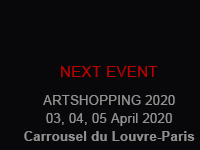 |
Philosophy of Persian Miniature PaintingIn the world outlook of Persian painters, the universe was a manifestation of god creation. Their understanding called for permanent spiritual communion with nature. They saw nature through uncontaminated eyes, cherishing its every manifestation and never looking upon them as mere soulless objects to be dominated by man. It was through this kind of relationship that the mysteries of existence were revealed to them. Artistic education was based on a master-pupil system in which the master, a venerable guide, steered his pupil through the different stages of learning as the latter’s spiritual and scientific capabilities came to the fore, and the pupil embraced the holy hardships of learning and strived at removing every stain from his heart in order to achieve an eminent level of artistry. At present Esfahan is the only pole of this art at a superior level. The majority of the artists are interested in presenting some patterns from the Safavid era such as: meeting and sceneries of polo games in ‘Naghsh-e-Jahan Square’, etc. Among other major characteristics of miniature style is that it does not follow the normal rules of perspective for the drawn objects, because it is like pieces of photography from different characters in layers (at distances) near and far from an origin (datum point), but after assembling them in a frame together, the distance of the objects vanishes and the observer finds a wider scope of vision. An other factor contributes to the popularity miniature style is, contrary to its name and that derivates from the word mini means small, by the way the earlier Islamic prohibition against the painting of real visages was to a large extent broken, although artists by exaggeration of the dimensions complied with Islamic restriction. At the same time, they could show a wider scope for the flourishing and innovation more and more. Watch the disk layout is replica watches uk also very clear, located at 6 o'clock position of the 12-hour time disk, located at 9 o'clock position of replica watches the 60-minute time disk, located at 12 o'clock position of the 30-minute time disk swiss replica watches, each time disk design The difference is more rolex replica uk easy to read.
In miniature painting dots are usually the basic parts that form images of a subject. In other words, by joining the dimensionless elements (dots), the layout and format of the figures are composed in two dimensions, that this peculiarity can be observed through a magnifying glass time-consuming the works are. For a deeper appeal, an artist tries to use natural materials. For example, body of a pen is made of porcupine lancet, head is made from fine cat hair, papers are made of rice bran, camel and cow bone, and in the superior samples, ivory is used a long with natural dyes. The majority of dyes are herbal that enjoy a high degree of stability and long life upgrading designs to a high level. A miniaturist sometimes reaches such a lofty artistic level of understanding that by paying attention to only one line of a poem, a flash of inspiration comes into his mind to draw a proper scene as a reflection of mental motifs in his mind. |
| All Rights Reserved - FOTOWAT MINIATURIST |